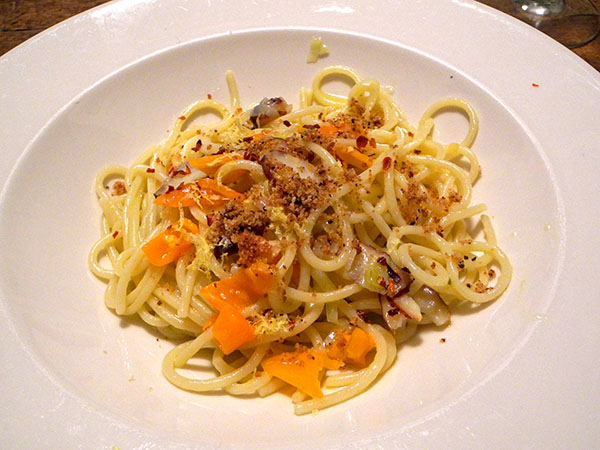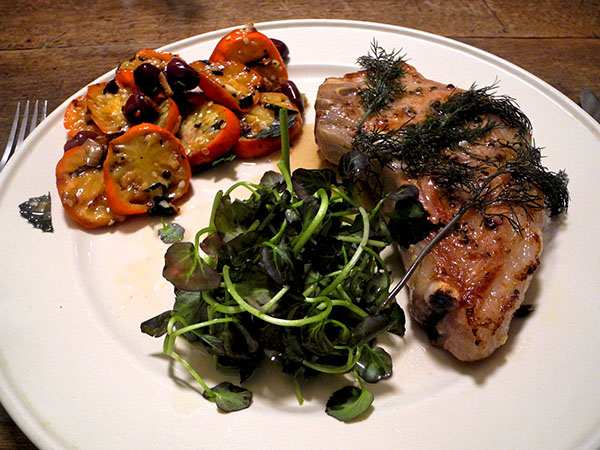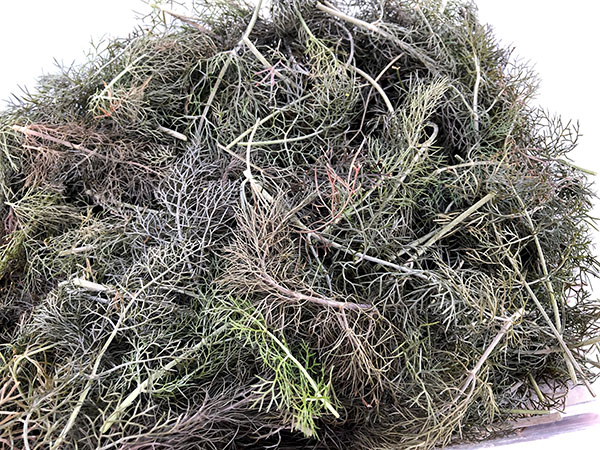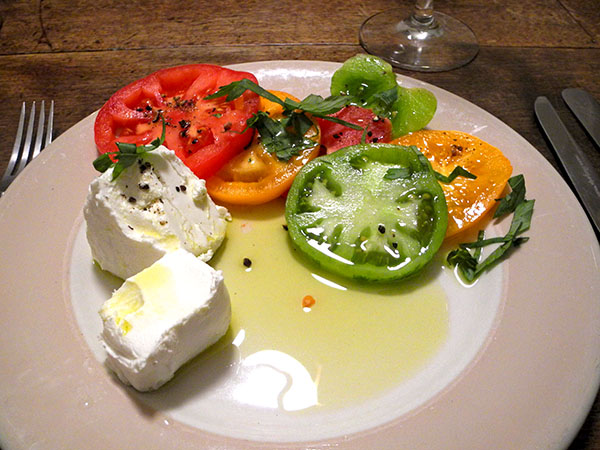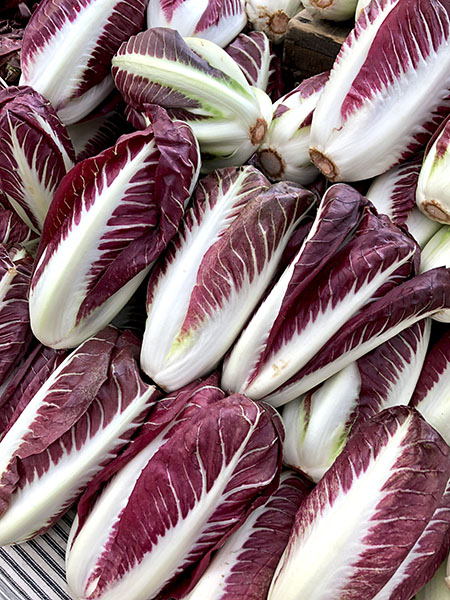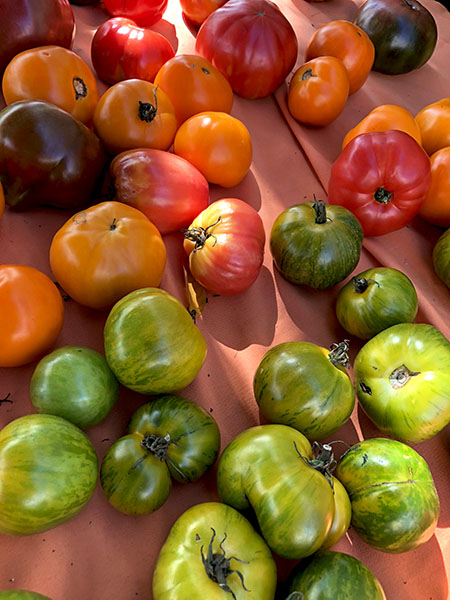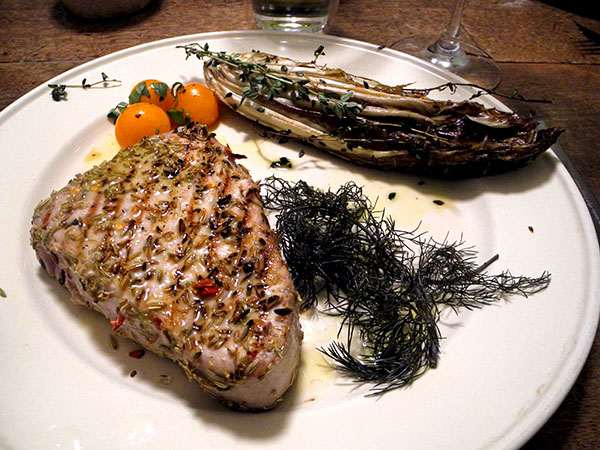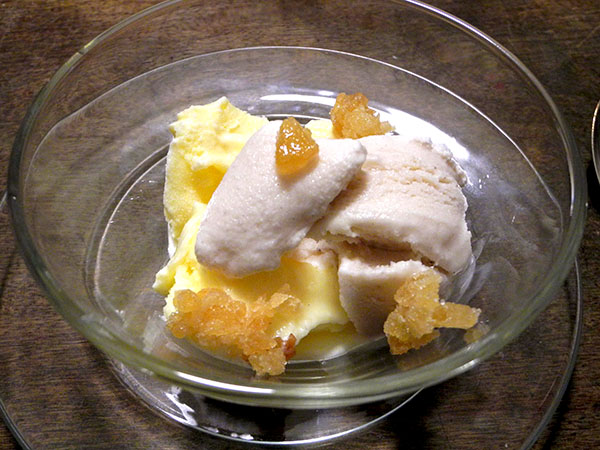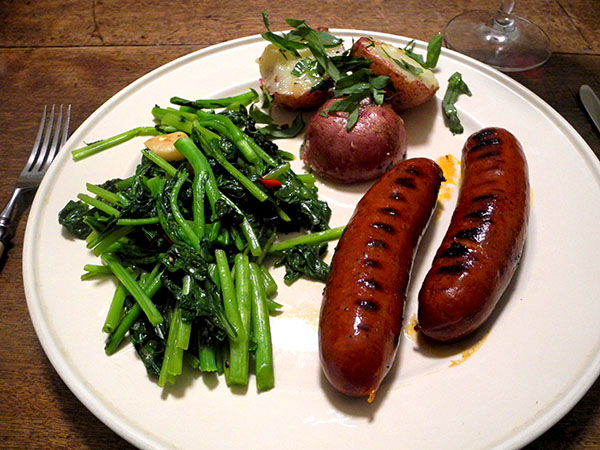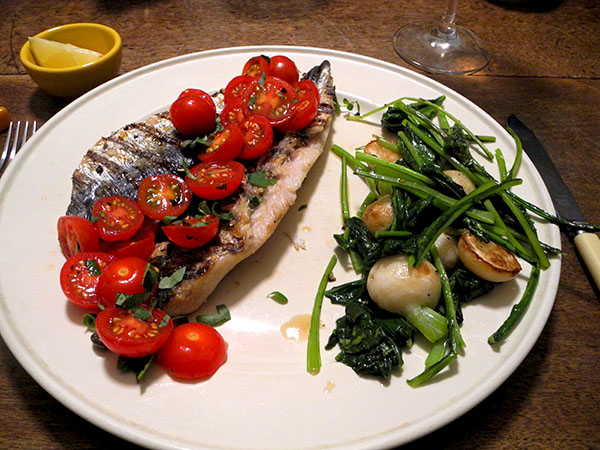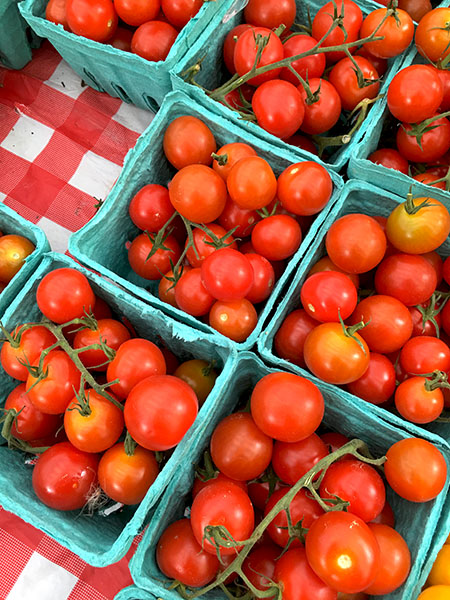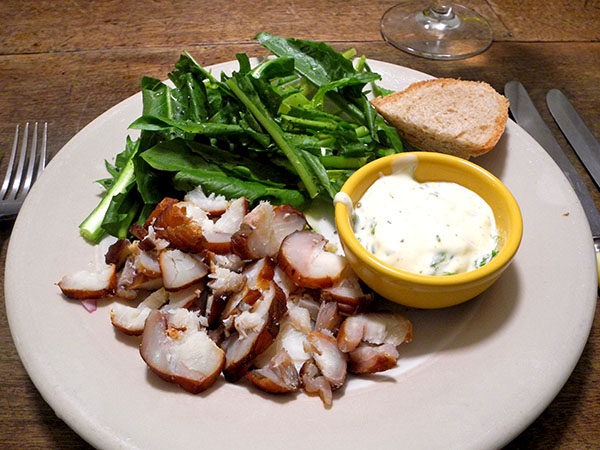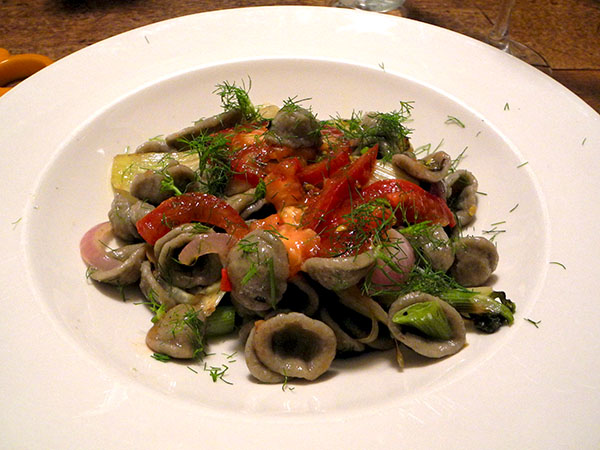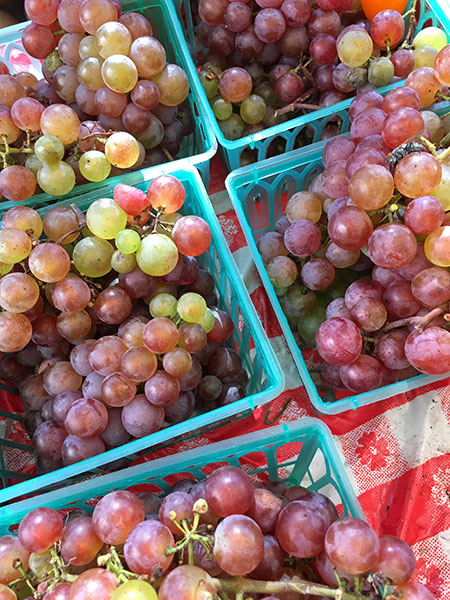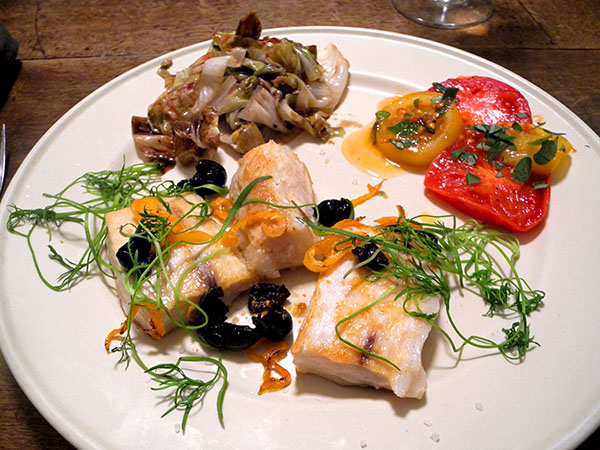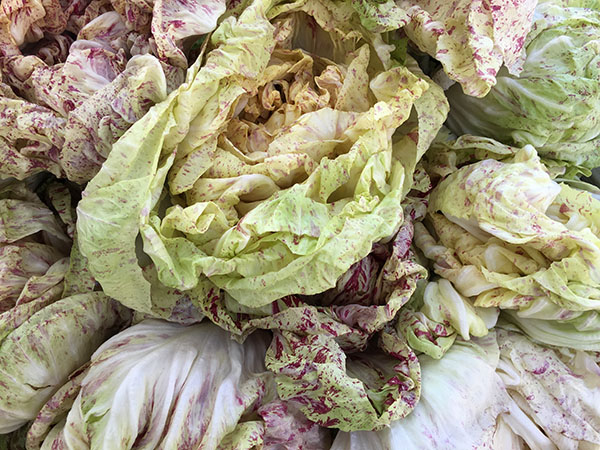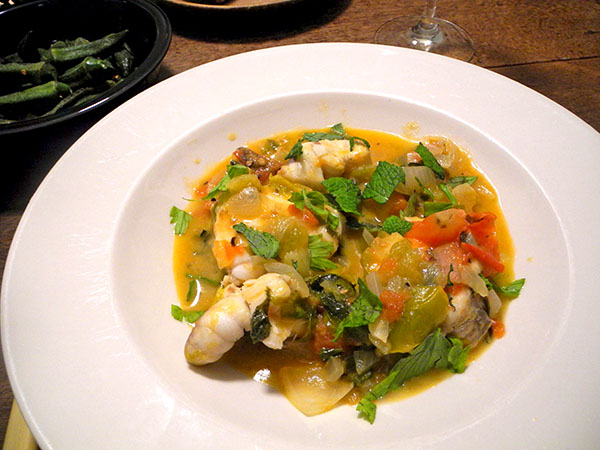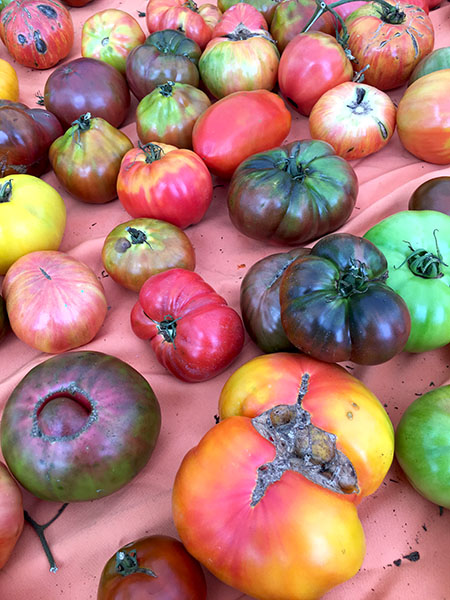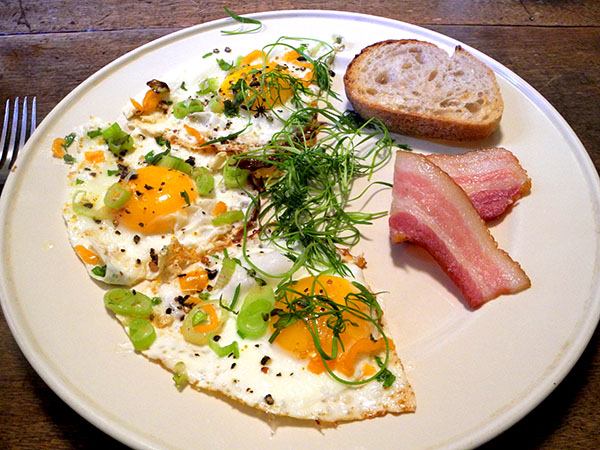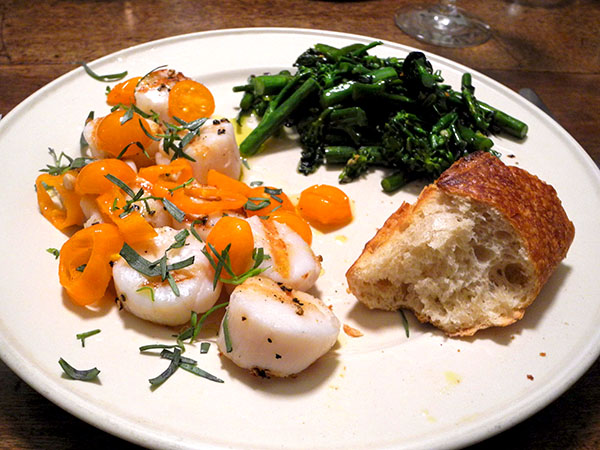
I’m back, even though yesterday I had just said I didn’t have time to do these posts this week. You can ignore this one if you wish (although that probably wouldn’t be a good idea). I’m really only publishing it so that I can remember to do this preparation again.
It was really, really good. I’m calling it for the habanada peppers.
- eighteen medium scallops from the American Seafood Company stand in Chelsea’s Down to Earth Farmers Market on 23rd Street, washed, drained and very thoroughly dried on paper towels, generously seasoned with salt and pepper, pan grilled for about 90 seconds on each side, finished with a squeeze of organic Trader Joe’s lemon, arranged on the plates with a scattering of horizontally-sliced fresh habanada peppers from Norwich Meadows Farm and 8 halved sun gold tomatoes from Berried Treasures Farm that had been softened, in succession, in a little olive oil inside a small Pyrex pan, finished with a sprinkling of chopped tarragon from Willow Wisp Farm and drizzled with some more olive oil
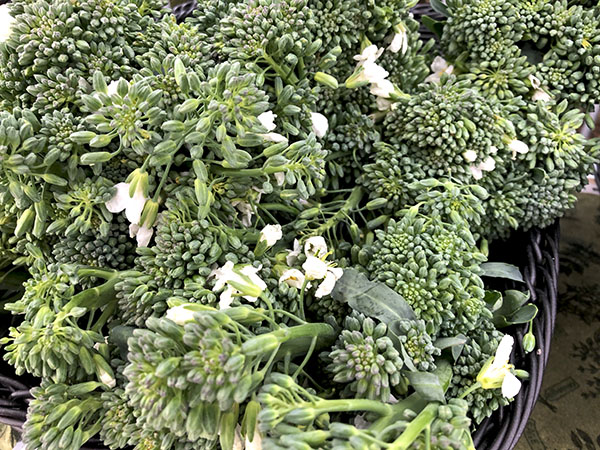
- one bunch of extraordinarily tender, very sweet flowering broccoli rabe from Echo Creek Farm, which also has a stand in Chelsea’s Down to Earth Farmers Market, wilted inside a large, heavy tin-lined copper pot with olive oil in which some very good red pepper flakes (remaining from the delivery of an excellent Waldy’s Wood Fired Pizza a few days earlier) had just been heated, seasoned with sea salt and freshly-ground black pepper, arranged on the plates and drizzled with olive oil
- sections broken off of an Orwashers white baguette, again, from their stand in Chelsea’s Down to Earth Farmers Market (it was a very humid afternoon, and the crust had wilted, so I freshened the loaf just before dinner by heating it in the oven at 400º for 2 minutes)
- the wine was an Italian (Sicily) white, Corvo Bianco 2015, from Philippe Liquors and Wines
- the music was Henry Purcell’s 1692 “semi-opera”, ‘The Fairy Queen’, Nikolaus Harnoncourt directing the Vienna Concentus Musicus and the Arnold Schoenberg Choir
